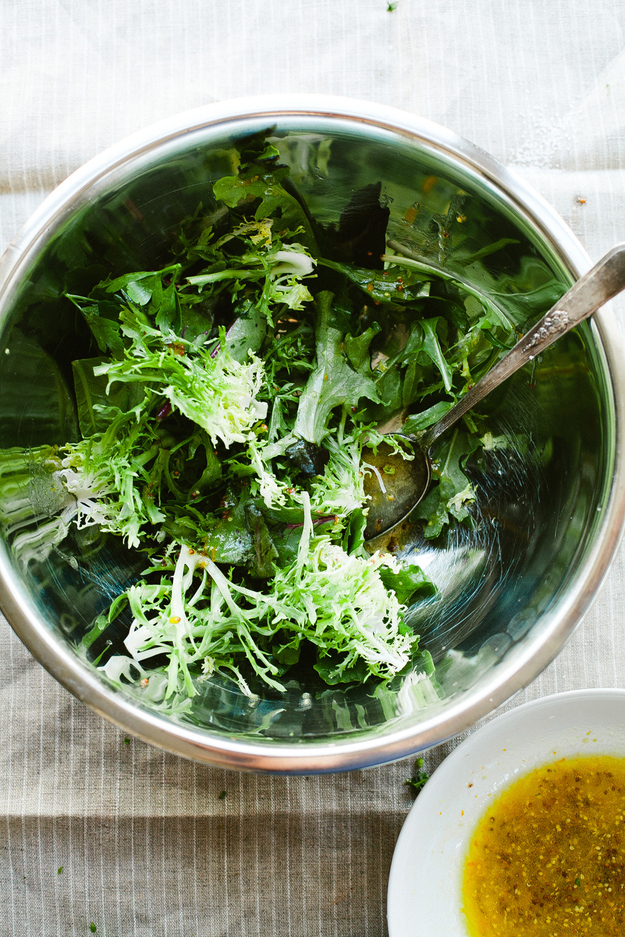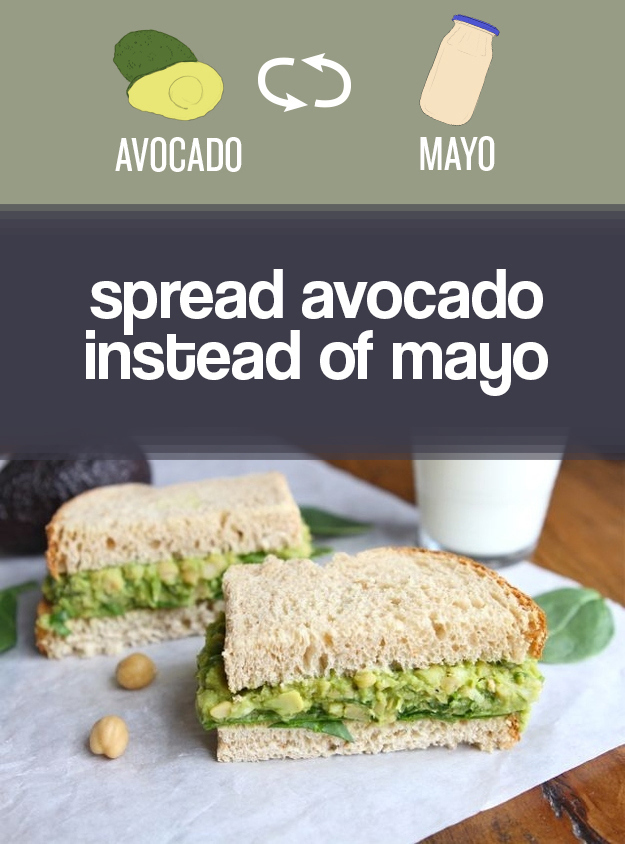


2. Drink your coffee and tea black.

No cream, no sugar. You'll get used to it. And it will encourage you to drink good coffee that doesn't taste like burning!
3. Remember this HANDy guide to help keep your portion sizes reasonable.
 visual.ly
visual.lyFist = 1/2 cup, palm = 3 oz. meat, fingertip = teaspoon, thumb = tablespoon.


You're more likely to stay on the Good Nutrition Train long term if you learn how to make healthier versions of foods you really enjoy eating, instead of ditching them entirely for virtuous (but sad) alternatives.
For instance: Swap half (not all) of the potatoes in mashed potatoes for cauliflower — they'll still taste like delicious mashed potatoes, but will be way less of a starch-bomb.

This goes for pretty much everything, from chicken fingers and french "fries" to vegetables at large. Roasting at high temperatures still gives food a flavorful crispy outside (thank you, Maillard reaction) with vastly less oil required, and way less mess.

Cooking without meat forces you to get more creative and eat more vegetables, both of which are life skills that will serve you well all seven days of the week. If you're already vegetarian, try eating vegan on Mondays and see how it goes.
Check out our Pinterest board for lots of yummy veggie recipes to get you started.


Stick with fruits and veggies, nuts, or food you made yourself. Even when it has more calories, you'll get more nutritional bang for your buck, avoid all the junk that comes in processed food (fat, sugar, salt, artificial dyes, preservatives, etc., etc., etc.) and skip the wasteful packaging.





Anything you make yourself is likely to be healthier than what you’d buy instead. But it’s hard to make the time, so start slow: Make a lunch for yourself on Sunday to bring to work the next day. The more you do it, the more you’ll get into the habit. Check out these ideas for what to make.


11. Eat all the vegetables on your plate before you eat anything else.

Preventative measures: Fill up on the healthy stuff and then only eat as much mac 'n' cheese as you have room for. Adding a regular salad course to your dinner every day is a great way to do this.
12. Use at least half whole-grain flour in baking recipes.

A life without cake and cookies is no life at all. But you'd be surprised at the number of treats that taste just as good (or better) with whole grain flour as they do with plain old all-purpose. You'll get more fiber, more protein, and less of an empty-calorie crash.
That said, baking is tricky; changing flours can change the structure and texture of what you're making, so start by subbing just part of the flour and see how it works. Also play around with flours that aren't made with wheat (corn, oat, rye, spelt, etc) or not even made from grain (almond or coconut). Kim Boyce's book Good to the Grain is a great resource for recipes and ideas like these yummy spelt-flour chocolate cookies.

CSA = community-supported agriculture. You prepay a seasonal subscription fee directly to a farmer (or multiple farmers) and, in exchange, get a lovely array of fresh fruits/vegetables on a regular basis throughout the growing season. It's great for you because it forces you to eat more fresh food and to cook more in general.
Check here to see if there's a CSA in your area. Once you're in business, check out these ideas for what to do with your veggie haul.

Even diet soda isn't so hot for your teeth or your waistline. Stick with seltzer or water and dress it up with lime or lemon, a sprig of a fresh herb, or a few drops of cocktail bitters to add flavor without adding sugar.



Science says: Large plates make you think you have a relatively smaller amount of food, so you'll feel less satisfied and want more. So game your own brain by serving rich food on little dishes.
17. When you're cooking eggs, use twice as many whites as yolks.

Going all-egg-white on a scramble, omelet or frittata isn't much fun for anyone, but you can cut out a lot of saturated fat and still end up with something delicious by ditching around half the yolks and adding extra whites instead.
18. Eat as many colors as you can every day.

Bright colors in fruits and vegetables usually signify concentrated nutrients (vitamins, minerals, antioxidants, etc.), which are very good for you. The more different colors you eat, the more diverse the range of nutrients you're getting.

Get ideas for lots of clever ways to substitute healthy ingredients here.
13 Things You Totally Missed In 2017 If You Didn't Have TIDAL
People on TIDAL had a much different 2017 than the rest of you clowns. Sign up now to get a free account with just an email address to get in on this before the year is over!
Original article and pictures take www.buzzfeed.com site

Комментарии
Отправить комментарий